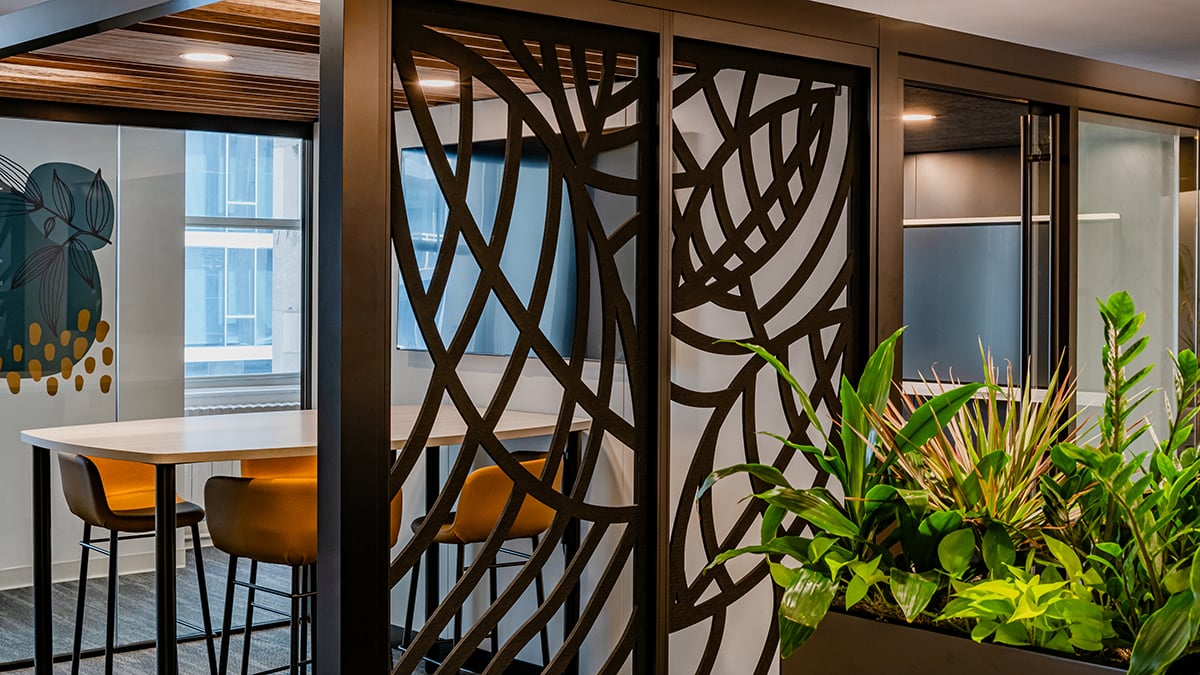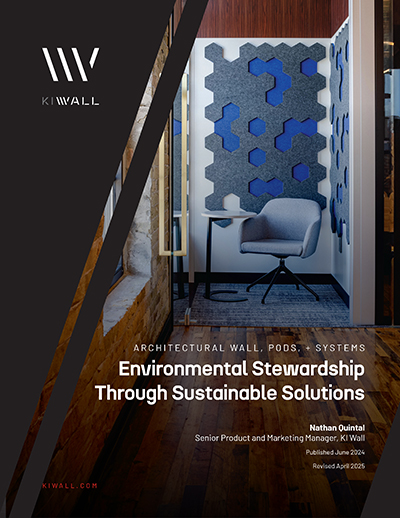Discover how modular architectural walls support a more sustainable built environment—reducing waste, enabling adaptive reuse, and helping you design with long-term impact in mind.
With sustainability as a driving force in commercial interiors, the way we build is constantly evolving. From material selection to long-term adaptability, modular architectural walls offer an innovative, low-impact alternative to conventional construction. At KI Wall, we help you plan for future change without compromising performance or environmental responsibility.
These insights explore how modular architectural walls reduce waste, support adaptive reuse, and contribute to green building goals, all while promoting long-term sustainability.
Rethinking Interior Systems for Sustainable Impact
Drywall is still widely used, but its environmental footprint is increasingly hard to justify. Each year, building demolition, wallboard installation, and manufacturing generate several million tons of gypsum waste. This type of debris is difficult to recycle due to nails, coatings, and adhesives—and in some states, like Vermont, failing to recycle can lead to fines under law 10 V.S.A. § 6605m.
Modular wall systems provide a cleaner solution. They reduce the need for demolition, minimize jobsite waste, and eliminate the dust and emissions that come with conventional framing and drywall work.
Modular Walls as a Tool for Adaptive Reuse
Our architectural walls are engineered for flexibility. Systems can be relocated, reconfigured, or repurposed with minimal waste or disruption.
- 97% of panels are recyclable
- 99% of components can be reused
- Pre-assembled designs simplify installation and eliminate drywall offal
- Glass storefront systems can be updated without cutting into ceilings or floors
This means faster timelines, lower labor costs, and more sustainable renovations.

Retrofitting Historic Spaces Without Sacrificing Integrity
Integrating modern infrastructure into legacy buildings without compromising character is a common challenge. WiggleRoom Super Structures streamline this process with a non-invasive, freestanding design.
These post-and-beam systems allow you to seamlessly integrate:
- Lighting
- Ventilation
- Acoustic control
Plus, these elements can be incorporated without attaching to or altering original walls, ceilings, or floors. Installations can be completed in a matter of days, allowing you to modernize spaces without compromising historical character.

Material Transparency and the Circular Construction Economy
KI Wall prioritizes responsible material sourcing and circular design. Products are made with:
- Recycled aluminum, steel, and glass
- PET from reclaimed water bottles
- Post-consumer denim insulation
- Certified wood for doors and trims
Packaging is recyclable or reusable, including:
- Polyethylene foam (#2 plastic) between frames
- Metal and plastic banding
- Corrugated inserts with 78% recycled content
Regional sourcing further reduces emissions associated with transportation.

Aligning Architectural Walls with LEED, WELL, and LBC Goals
Our architectural wall systems help meet the criteria for green building certifications by:
- Reducing construction and demolition waste (which accounted for 145 million tons in U.S. landfills in 2018)
- Improving indoor air quality (products meet CA 01350, LEED, and WELL requirements)
- Extending the lifespan of materials through reuse and easy disassembly

Acoustic performance is also critical. Solid walls offer STC ratings of 44–50, surpassing the acoustic isolation of typical insulated drywall. Glass walls range from 36–41 STC, supporting open plan designs without compromising speech privacy.
Designing a Lower-Carbon Future
By 2025, KI Wall will reduce its greenhouse gas emissions and energy use by 25% compared to levels recorded in 2017. Environmental impact is tracked through:
- Life Cycle Assessments (LCA)
- Product-specific Environmental Product Declarations (EPDs)
- Ongoing embodied carbon evaluations
Additional strategies include:
- Using a solar array at our corporate design office
- Purchasing Green-e® certified renewable energy credits
- Supporting internal recycling and diversion initiatives

Future-Proof Interiors That Evolve
Architectural walls support a more sustainable, adaptable way to build. Whether you're designing a modern workplace, upgrading a healthcare facility, or preserving a historic site, KI Wall systems provide long-term flexibility, efficient use of resources, and alignment with sustainability goals.
These are not temporary fixes. Rather, they’re durable, high-performance solutions built to evolve with your needs and a continued focus on sustainability.
For a closer look at how modular wall systems can help you design spaces that are both adaptable and environmentally responsible, download our Sustainability White Paper below.


